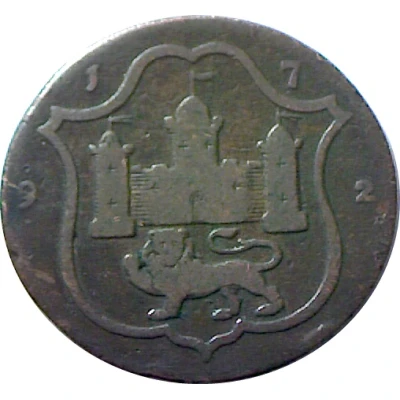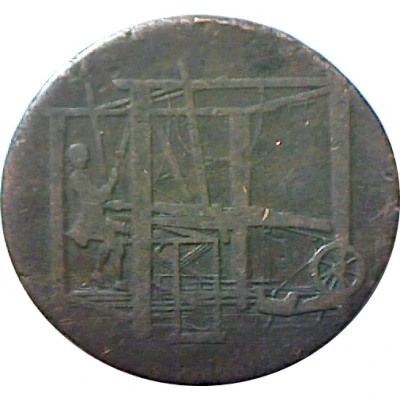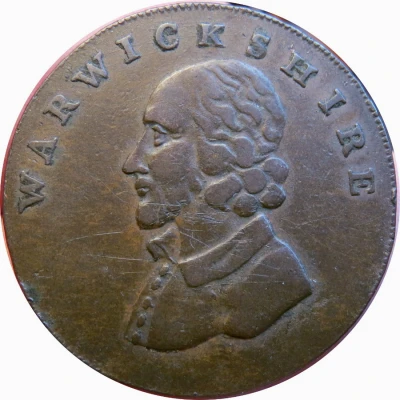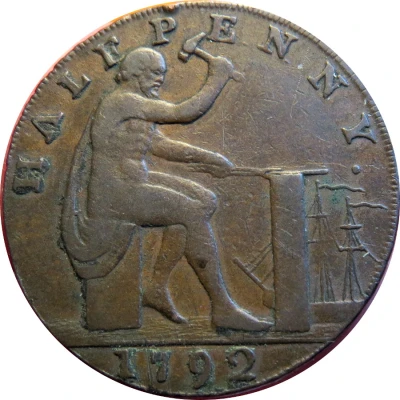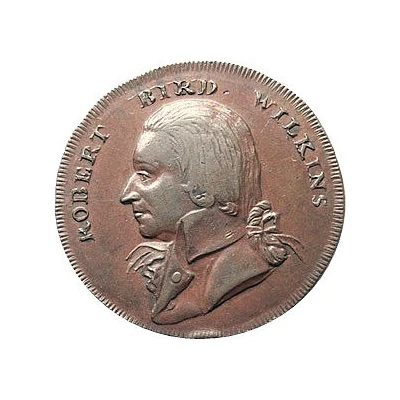
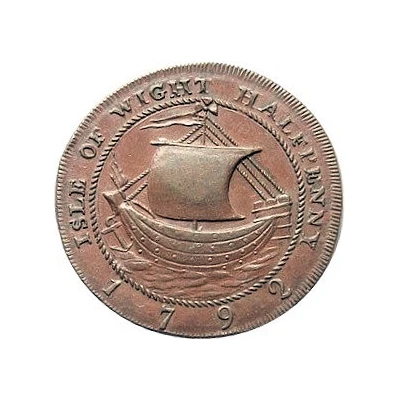

© ABC Coins & Tokens
½ Penny Hampshire - Isle of Wight / Wilkins
1792 year| Copper | 9.94 g | 27 mm |
| Issuer | United Kingdom (United Kingdom, British Overseas Territories and Crown Dependencies) |
|---|---|
| Type | Token |
| Year | 1792 |
| Value | ½ Penny (1⁄480) |
| Currency | Conder tokens (1787-1797) |
| Composition | Copper |
| Weight | 9.94 g |
| Diameter | 27 mm |
| Thickness | 1.8 mm |
| Shape | Round |
| Technique | Milled |
| Orientation | Coin alignment ↑↓ |
| Demonetized | 1797 |
| Updated | 2024-10-09 |
| Numista | N#114868 |
|---|---|
| Rarity index | 86% |
Reverse
A centre rope circle containing a single-masted antique Medieval early English round ship with square-rigged sail set left, legend around
Script: Latin
Lettering:
ISLE OF WIGHT HALFPENNY
1792
Engraver: Mainwaring
Edge
Plain with incuse legend
Lettering: PAYABLE AT HIS OFFICE NEWPORT ········
Comment
The Isle of Wight is a county and the largest and second-most populous island in England. It is in the English Channel, about 4 miles off the coast of Hampshire, separated by the Solent.Robert Bird Wilkins was an ironmonger, plumber, brazier, tinplate worker, bar iron, and coal merchant. He was also possibly a freeholder in the county, and a banker in Newport.
Engraver and manufacturer: Mainwearing (Champion u. d., 70, ref. 96a).
Note: The reverse is thicker in the middle ...
Interesting fact
One interesting fact about the Token ½ Penny (Hampshire - Isle of Wight / Wilkins) 1792 from United Kingdom is that it was issued during a time of currency shortages in the late 18th century. The coin was minted by a private company, Wilkins & Co., and was intended to serve as a substitute for the official copper coins issued by the Royal Mint. The Token ½ Penny was made of copper and had a unique design, featuring an image of a shield with the initials "W" and "I" on either side, surrounded by a wreath. Despite its unofficial status, the coin was widely accepted and used in trade throughout the region. Today, it is considered a rare and valuable collector's item, with some examples selling for thousands of pounds at auction.
